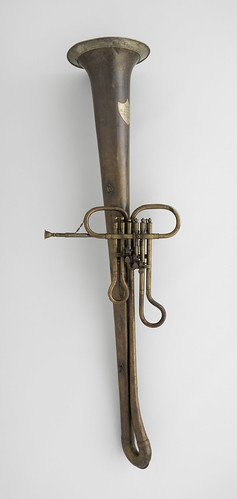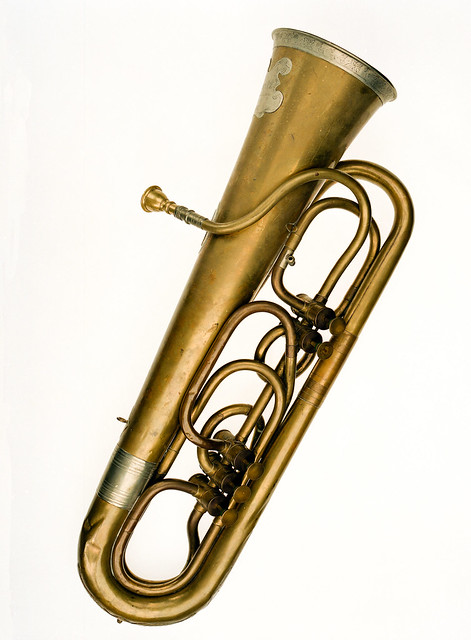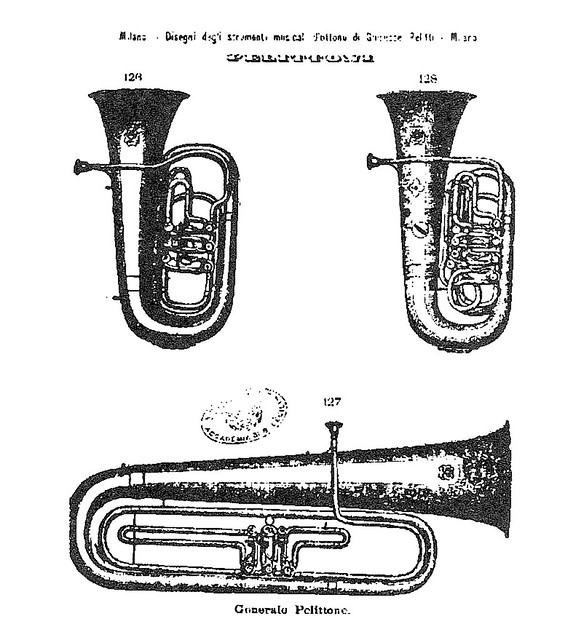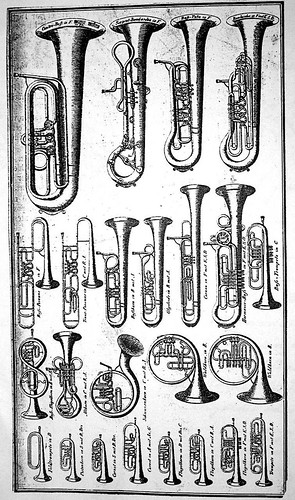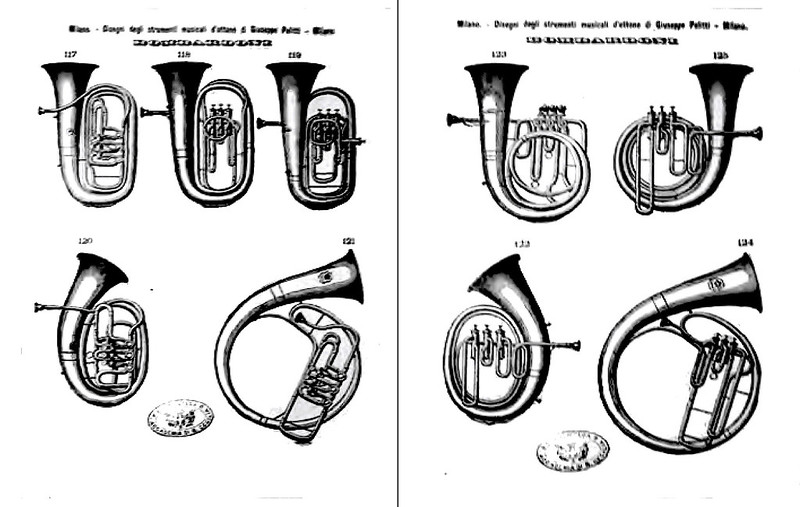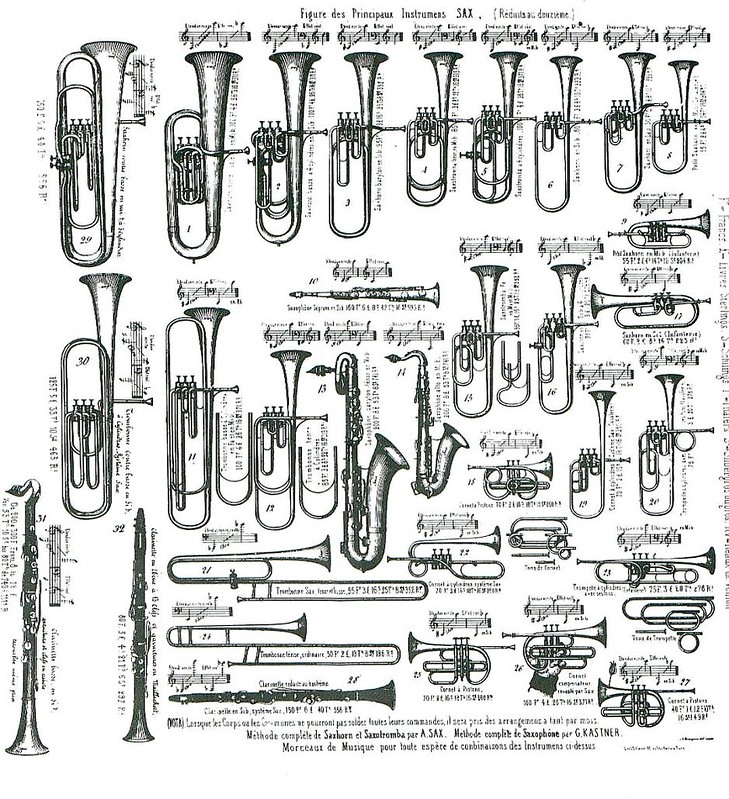 The advancements in the development of the pistons and valves brought along some new instruments in the most varied forms, with patents from different countries that in many cases resembled each other. In 1835, a valved ophicleide was developed by Leopold Uhlmann in Vienna, and Guichard created a three-Stölzel-piston ophicleide in Paris (sometimes called ophicleide monstre, like the Bombardon). But it is likely that there were instruments of this type before.
The advancements in the development of the pistons and valves brought along some new instruments in the most varied forms, with patents from different countries that in many cases resembled each other. In 1835, a valved ophicleide was developed by Leopold Uhlmann in Vienna, and Guichard created a three-Stölzel-piston ophicleide in Paris (sometimes called ophicleide monstre, like the Bombardon). But it is likely that there were instruments of this type before.
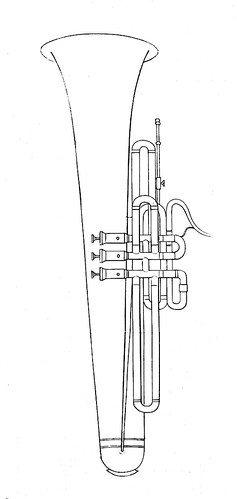 Ophicleide with three Stölzel piston valves in an illustration of the "Méthode Élémentaire et facile d'Ophicleïde à Pistons ou Cylindres" by Th. Garnier (1844).
Ophicleide with three Stölzel piston valves in an illustration of the "Méthode Élémentaire et facile d'Ophicleïde à Pistons ou Cylindres" by Th. Garnier (1844).The first Bass Tuba was patented in Prussia on September 12, 1835 by Johann Gottfried Moritz and Wilhelm F. Wieprecht (with five of its Berlin pistons). Despite it ending to be the one that would prevail over the others as a precursor to the modern tuba, it would take several years for it to gain real importance. Very similar instruments were developed almost simultaneously, such as the Austrian Bombardon (1833 or even earlier, due to its invention usually attributed to Wenzl Riedl) and the Italian Pelittoni (first with Viennese valves and soon after with rotors), patented a decade later. In 1841 Périnet patented a bass equipped with 4 of his pistons in France, and in 1842 the Cerveny brand was created in the current Czech Republic, with a catalog that, among other things, included Bombardons, Valve-Ophicleides and Contrabass Tubas (from 1845 on).
 Bombardon with rotary valves, from the “Metodo progressivo per oficleide o bombardone” (F. Paoli, ca. 1866).
Bombardon with rotary valves, from the “Metodo progressivo per oficleide o bombardone” (F. Paoli, ca. 1866).
Tenor ranged instruments named Bombardino (literally "little Bombardon") emerged in 1835 in the workshop of Giusseppe Pelitti (Milan); on the other hand Carl Wilhem Moritz, son of Johann Gottfried Moritz, patented a 4 valved tenor tuba in 1838. But the invention of the euphonium is commonly attributed to Ferdinand Sommer in 1843 (Weimar). That same year in Paris, Adolphe Sax patented his brand of Saxhorns. In 1858 Gustave Auguste Besson, confronted with A. Sax, moved to London to develop his own instruments.



